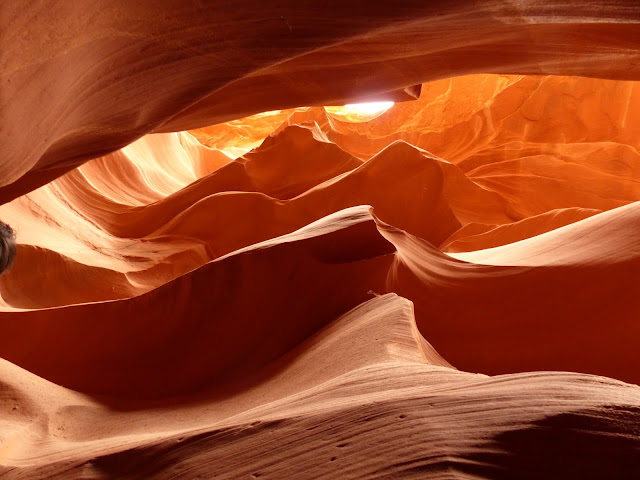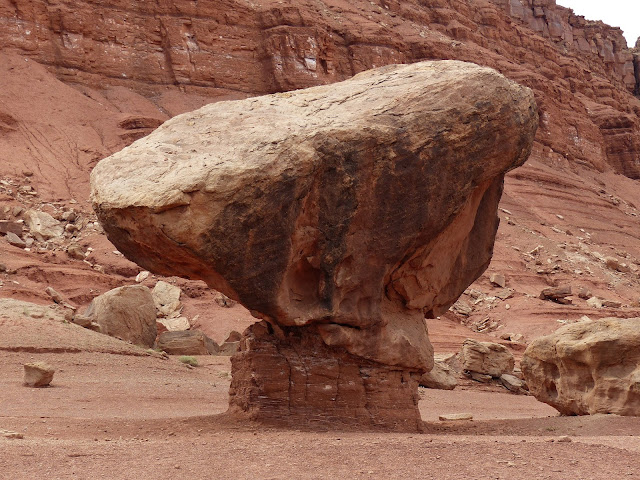I have been looking forward to this hike for a long time because I have been told it is amazing. Of course, the photos that the tourist places put out are absolutely beautiful.
This photo and the one below will give you an idea of how deep into the canyon we had to go. There were multiple levels of steel stair steps going down into the canyon.

Since we were on a crowded tour with groups ahead of us as well as behind us, it was hard to take pictures of just the rock formations without people in them. Sometimes the pathways were wide enough to include everyone in the group and other times they were so narrow that you almost couldn't get your whole foot on the sand.
Below are more of the shots I took during the tour. Some are aimed directly above so you can see the light coming in. Others are views of multiple layers of this amazing slot canyon. This canyon was formed by erosion caused by water as well as wind. Sandstone is relatively soft but it still took many, many centuries to form this canyon.
The hike is not a very long one but there is stunning scenery every time you look around or take a few steps.
I hope you enjoy the photos.
And this concludes our tour for today.


























































